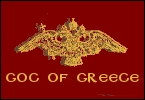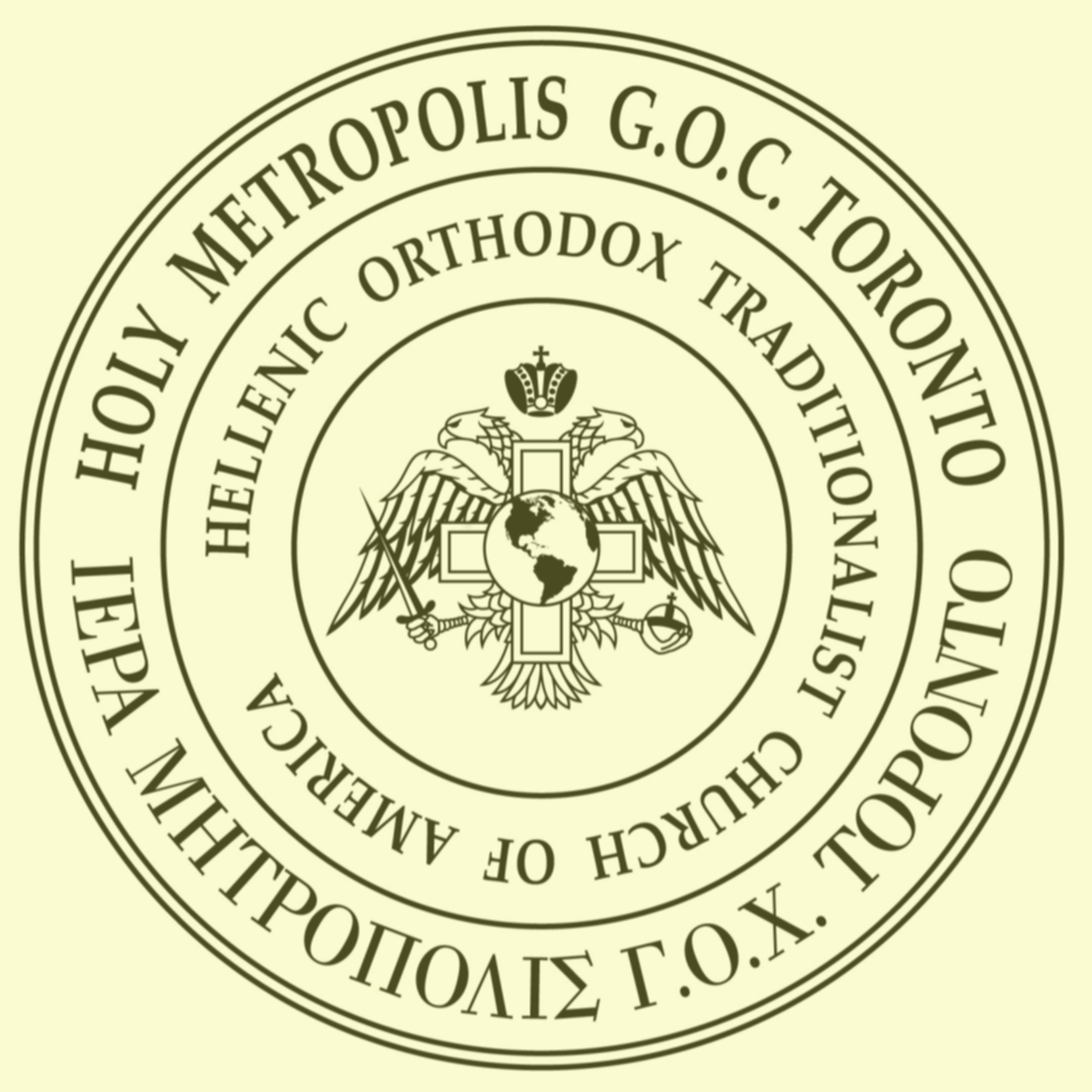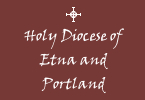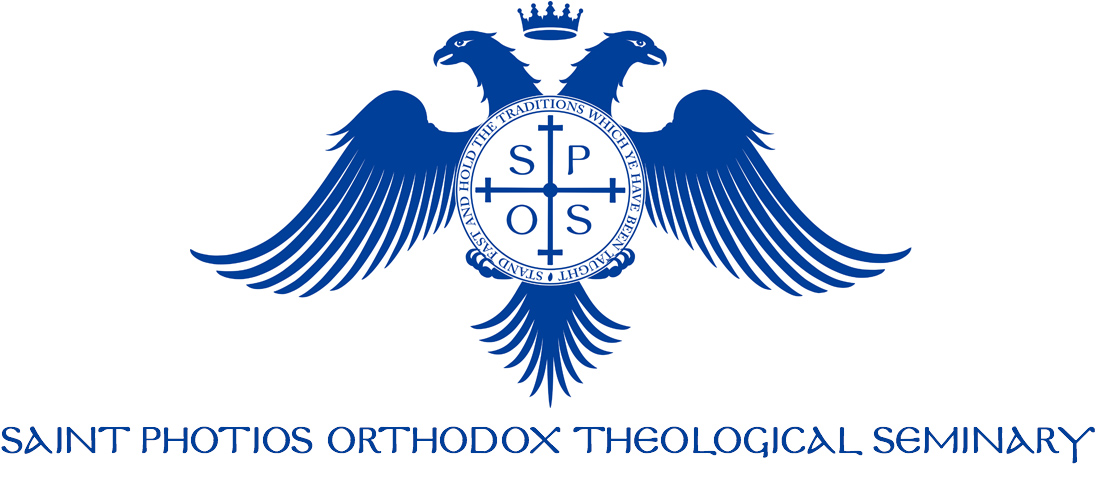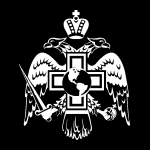Homily on St. John the New Almsgiver and Wonder-Worker
- Details
- Created on Friday, 04 May 2018 01:18
Delivered on the day of his Proclamation as a Saint,
At the Holy Convent of St. Demetrios, Amphiale, Greece
Saturday, April 15, 2018 (Old Style)
Your Beatitude, Archbishop Kallinikos of Athens and All Greece,
Chief Prelate of the Church of the Genuine Orthodox Christians of Greece,
our Father and Master;
Your Eminence, Metropolitan Agafangel, Chief Prelate
of the Russian Orthodox Church Abroad;
Right Reverend Bishops and Representatives of the
Church of the Genuine Orthodox Christians of Romania;
Your Eminence, Metropolitan Gerontios, Ruling Hierarch
of the Holy Metropolis of Piræus and Salamis;
Most Reverend and Right Reverend Holy Hierarchs and Brethren;
Honorable Presbyters and Deacons of the Church;
Very Reverend Thekla, Abbess of this Holy Monastery;
Elect company of Monks and Nuns;
Beloved Brothers and Sisters in Christ:
Christ is Risen!
May the joy and the light of the Resurrection inundate us all!
In this Resurrectional period of joy and light, we have been summoned by our Mother Church to this blessed inter-Orthodox gathering, in order to proclaim that the spiritual Father and spiritual son of St. Chrysostomos the New Confessor, the spiritual Father of our parents and grandparents, is a Saint!
God “chooses” and designates those persons to whom He entrusts rare spiritual gifts, to the end that they might become small lighthouses for beleaguered souls astray amidst the eddy of secularization and a tranquil lee that draws the weary to itself: Sacred personages, befitting antecedents for the existence and preservation of this world, skilled interpreters of the Divine Scriptures, adepts of true dogma, and heroic adversaries of the spiritual confusion of our age of heresy and misbelief.
Such a personality, an Angel upon the earth, called by Divine Grace for his great priestly labor, whose virtues, bestowed by Grace, and miracles our Church loudly attests, was the one newlyacknowledged as a Saint by our Mother Church Church: Father John Baxebanopoulos, “the Father of the poor,” as he is known.
Not in my capacity as Metropolitan, but as one most profoundly connected emotionally with this very Church from the early years of my childhood, and as one whose mother’s familial precepts and counsels were frequently the result of the prior advice, prayer, and even mediation of Father John—for this reason I have been assigned by the Holy Synod to make known to it the biographical details that testify why Saint John, the founder who established this Holy Convent of St. Demetrios, in Amphiale, and the Sacred Monastery of the Holy Trinity, in Pentele, is a hallowed personage of the twentieth century, and why his name, as is meet, is now inscribed in our Church’s catalogue of Saints.
Right faith and conduct, pure and honorable confession, observance and transmission of the Orthodox Tradition received from the Holy Fathers and Apostles, an exemplary Christian life dedicated fervently to the Holy Trinity, the presence of a multitude of virtues and preternatural spiritual gifts and the vision of God, exceptional service and contributions to the Church of Christ and to her flock: these constitute characteristic hallmarks of the persona of our Father John, which was in perfect accordance with the image and likeness of the Lord. These are hallmarks attested not only by the blessed biographers whose works I have utilizedfor sources, but are in concord with the testimonies of the nuns of this Convent and what persons in our family and the flock of our Church witnessed in the Holy Elder while he was still alive.
The offspring of pious folk, Charalampos and Maria, from the island of Chios, which has given birth to so many Saints, was born in Smyrna, in Asia Minor, in 1897—a worthy child of that sanctified earth watered by the blood of the countless Martyrs of our Faith and nation. George, as he was known in the world, had one brother and three sisters who, together with their pious mother, were destined later on to become the occasion for the disclosure of God’s plans for this Divinely taught man. Orphaned of his father at the age of sixteen, with a heightened awareness of his responsibility and obligations toward the family, he assumed thereafter the rôle of protector; and, as would prove to be the case in the course of his life, George became the protector of his family not only in this temporal life, but also an instructor, counsellor, and guide of his mother and his beloved siblings toward the eternal city of God.
During the Asia Minor campaign of 1920, he was conscripted by the Turkish state to fight against the Greeks. George, however, as a genuine child of the Hellenic East, notwithstanding intimidation and threats, succeeded in escaping from the Turkish army. “Deserters” were automatically condemned to death, but George was saved by Divine Grace. He lived through all of the drama and tribulation of the Greeks of Smyrna and Asia Minor during that era. He experienced the tempest of war and uprooting. In 1922, amid the catastrophe of Asia Minor and the uncouth and inhuman persecution of the Hellenes, he reached Greece as a refugee, with his family, and settled in Piræus. In his new homeland, he worked hard and conscientiously to provide a livelihood for himself and his family, and, with God’s help, managed to survive.
His efforts proved fruitful. George labored and was productive, and he made rapid progress. With his meek, peaceable, benevolent, and sympathetic character, it was clear that worldly life was not the course that the Most High had planned for him. A secret yearning for asceticism and wholehearted dedication to Christ became ever more intense in the soul of the young George. Prayer never left him in all the difficult years of his youth, of persecution, and also of exile. From his early years he studied, recited, and read the entire Psalter daily. Whenever he was negligent in this, he would hear a voice urging him to return to prayer. The revelatory signs of the calling and Grace of the Saint, to the extent that his humble personality would permit us to know, were life-changing. One of these was that he would abandon his decision to settle on the Holy Mountain and reveal for us his God-deigned destiny. By Divine revelation, during his journey to the Mountain—as his biographers attest—crosses appeared in the sky, while a voice was heard saying: “Return, George, for you have taken up four crosses: your mother and your sisters. I intend for you to become a clergyman, and you will save many souls.” Thenceforth, this man, who surrendered himself in an exemplary manner to the Divine Will, willingly followed the way of the Cross that befits a Christian.
“Authentic human beings,” as St. Gregory Palamas calls them, genuine people, boundtogetherbypurity of heart, freed from the passions that darken the human personality, such holy and righteous persons are those who, when they meet, recognize one another, just as St. Chrysostomos the New Confessor, the Saint’s spiritual Father, recognized George’s character, humility, and love for God, tonsured him a monk and gave him the Great and Angelic Schema with the name “John” (the Theologian). He was subsequently ordained Deacon and Presbyter, receiving the dignity of Archimandrite from the sainted Bishop Germanos (Barykopoulos) of the Cyclades in October of 1943. Father John, dedicated now to the Church and to the service of the Altar, was deeply and especially attached to St. Chrysostomos, the Confessor of our martyric Church. The events surrounding the repose of the Saint of the Genuine Orthodox constituted yet another sign of the revelations from God that Father John experienced. Typical is the account of one event by a person, now deceased (the niece of St. Chrysostomos), according to which Father John saw in a vision Sts. John the Forerunner and John the Theologian preparing a shining throne for his spiritual Father. The Saints revealed to him the person for whom the throne was intended and asked him to inform him accordingly. Father John, after much hesitation, and having persistently called his spiritual Father, confessed his sacred mission, about which, to be sure, St. Chrysostomos was evidently informed, calmly replying, “I know; I have been summoned. ...I called you to confess (to you).”
The Church of St. Demetrios in Amphiale, Piræus, was to become the place in which this genuine child of our Church, the Confessor of the Faith, the champion of the Truth, the torchbearer and fervent advocate of the sacred canons and holy dogmas received from the Holy Fathers and Apostles, would sanctify and be sanctified. This Holy Convent, established by the Holy Father, was a haven of salvation for souls in the midst of the tempest of persecutions of the Orthodox by the New Calendarists of that period. In this small Hesychasterion his mother and his two sisters, who had in the meantime been tonsured nuns by the Holy Elder, fulfilled their repentance, thereby revealing God’s plan.
During that martyric period of persecutions for Orthodox Greece, as our older believers know, the rage of the official Church against the keepers of the Traditions of the Orthodox Church was intense and unrestrained. Following orders, the police persecuted the faithful, and even more so the clergy, with fury. The steadfast fidelity of the Orthodox to Tradition—in spite of the arrests, the destruction of Churches, and the unfrocking of the clergy—turned simple Christians into contemporary Confessors of the Faith. During one police patrol, and while the Saint was liturgizing, the congregation realized that the police were attempting to locate the then well hidden Church. The nuns and biological sisters of the Saint besought him to chant in a subdued voice, lest they be discovered. But he, full of faith, said: “God will make them deaf, my daughters.” In fact, although the police were a breath away from the Church, they did not notice the presence of the assembled faithful, in spite of the holy Priest’s loud and strong voice. In another parallel case, when the Saint was on his own, the police burst in like wild beasts in order to arrest the “unlawful” clergyman. Although the Saint was beside the Holy Table and was praying, they left the Church in a huff without seeing him, as though he did not exist.
At times, children who were in the Church testified that the devout celebrant of the Divine Mysteries, silent and misty-eyed during the performance of the Divine Mystery, levitated, and they would exclaim: “The Priest is in the air.” Another astonishing event was the restoration to life of a baby, shortly after the Divine Liturgy, whom his mother, in an effort to force-feed him, had choked. Insensible, without a trace of life, he was placed at the feet of the Saint at the very same moment by his calm mother, who was full of faith. The ardent possessor of the gift of healing—and not that alone—took the child in his arms, breathed three times onto his face, made the sign of the Cross over him, and lifted him up, saying: “In the name of Christ, arise.” As though by a miracle, the child returned to life. Such was the venerable and humble Elder John of Amphiale, a man endowed with spiritual gifts, a faithful steward of the Lord, who frequently saw the sign of the Cross in the flames of candles that the faithful had lit for the reposed, and sometimes beheld the figure of the Cross on the foreheads of those who were being saved.
Holy men, by reason of their genuineness, succeed in becoming united with the uncreated Divine Energies. “Holy are they who, on account of their exceeding purity of heart, have beheld and experienced the radiance of God.” St. Hieronymos of Ægina, who also hailed from Asia Minor, discerned such a radiance in Father John’s countenance. St. Hieronymos testifies that he refused to confess Father John, as the latter requested while on a visit to Ægina, since he perceived his sanctity immediately upon his arrival. He saw that Father John was bathed inlightand elevated above the earth. St. Hieronymos noted clairvoyantly that “when Father John reposes he will work miracles.”
Not only was he recognized by Saints who were his contemporaries (Saints who have already been entered in the diptychs of the Church), but the pious faithful, too, sensed his holiness, which emanated from his urge to console others and from his humility. “Just as he who wears perfumes is made known by their aroma, even if he does not wish so, he who has the Spirit of the Lord is known by his words and his humility” (St. John of the Ladder, Patrologia Græca, Vol. LXXXVIII, col. 1088A). Almsgiving and philanthropy characterized the life of Father John, which was at the same time a good life and one of spiritual struggle. Visits to hospitals, prisons, and every kind of institution for unfortunate and suffering souls, in addition to schools—in the company of monastics—were among the most basic and frequent activities of this Divinely-wise man. Tirelessly and unremittingly he worked together with his fellow man. He overflowed with love for the wronged, the helpless, and the sick, and especially loved children. Not in the habit of acquiring anything and voluntarily poor, he gave away what he had, offered goods to those in need, gave money, and provided young women with dowries. His prayer for mankind never abated; he unceasingly commemorated countless names of donors, pious faithful, the ailing, and the reposed; but the primary task of this teacher of love was to ease with his words the pain of people’s souls.
He was a loving teacher, a rare spiritual father and guide, and also a compassionate helper, by means of aprofound and definitiverelationship and interaction with his spiritual children, both monastic and lay. His primary spiritual work was confession, the Holy Mystery of Repentance, during which, by Divine Grace, he managed to tame unruly souls and, through the deliverance afforded by the Mystery, to console suffering souls, and especially those who had gone astray. He was a genuine interpreter of the Holy Scriptures, unerringly giving counsel and guiding people of all ages. A singular personality, drawing Grace, strength, and courage from his own love for his fellow man, from his limitless faith, and from his unshakeable hope in God, he was one who “turned the sinner from the way of error” and from a deluded outlook. His words against the unionist Orthodox, the pan-heresy of ecumenism, and religious syncretism were a fiery catapult. Nevertheless, his indubitable boldness toward God, his self-sacrifice, and his reverential and Priestly bearing, made him known, through the Grace of God, not only to the Orthodox, but even to heterodox and those of other religions, whom he ultimately catechized and baptized. Fully embracing the will of the Lord expressed through the Prophet Ezekiel—“I will seek that which was lost, and bring again that which went astray, and will bind up that which was broken, and will strengthen that which was faint, and will protect that which is strong, and will feed them with judgment” (34:16)—this ascetic in the world brought many souls to the path of God through Holy Baptism, souls who matured into exemplary Orthodox Christians. The Grace poured out upon him verily changed the lives of those who approached him—laymen, monks, and nuns—to whom he provided particular spiritual care and protection.
An experienced teacher of a life of vigilance, he would undertake ascetic struggles, on the one hand, to set an example and, on the other hand, to train his flesh. He always wore chains crosswise on his holy body, which was inevitably made known when he entered a hospital shortly before his repose. This brave ascetic, a fighter against the passions, rested very little, and then only on the ground or on an austere wooden bed. The Elder, who during the Divine Liturgy kept complete silence and shed tears, kept vigil, praying, during the night-long services. In return for his ascetic spirit he was vouchsafed one evening to see the Lady Theotokos.
He struggled night and day for the salvation of his soul: frugal fare, silence, and continuous, unremitting prayer, as well as constant and attentive bodily and spiritual asceticism. Taking up his cross unmurmuringly and with joy, Father John conscientiously endured the bodily ailments from which he suffered. In response to his prayer that the Lord heal him, he heard a voice that said: “John, this is your cross; do you want me to take it away from you? It is through this that you will receive a crown.”
The holiness of Father John accentuates his freedom, and, as well, his boldness, abstinence, and nobility, his exaltation and lowliness, and his immeasurable and unstinting love for God and man. It emphasizes the ever-flowing energy of the Holy Spirit, which often chooses silence, discretion, privacy, and the concealment of things revealed by God. The holy personality of our Father John consciously strove to maintain this mystical sanctity, as did other Saints in the history of our Church.
The Elder himself was manifestly informed of his repose during his treatment in the hospital, after he was takenthere on January 1, 1966. The Archangel Michael appeared to him and said: “Your passport has been signed; prepare for your departure. The Lord is awaiting you with open arms.” He urged him to return to his Hesychasterion to make preparations. In the monastery, on the day of his repose he saw in a vision that he was being called to read in the Church in Heaven the Gospel “in which Christ called His disciples to follow Him.”
Shortly before his repose, the good Elder, after partaking of the Divine Mysteries, addressing the doctors who were beside his pillow, said to them: “Let me now go to my rest. Thank you; you are all in my prayers.” He inclined his head, folded his arms in the from of a cross with his prayer rope, looked upwards, turned his gaze toward the Icon of our sweet Panagia with the look of a child waiting on its mother’s affection, and closed his eyes. It was the evening of January 26, twelve midnight, that is, January 27, 1966, when his holy soul, childlike in innocence and ardent in faith, departed for its eternal habitation in the Kingdom of Heaven.
Saint John, holy and good, a mediator before God, is now a living and sanctified figure of our days. On not a few occasions, following his saintly repose, he has appeared alive, as people who knew him and people who did not know him attest. Nine years after his repose, on the eve of the Feast of the Holy Trinity, while a workman was visiting the monastery of the same name in Pentele, the Saint appeared and assisted the workman in a difficult manual task that he could not have accomplished by himself. The unexpected and sudden appearance of an elderly man clad in a rason [cassock] in the well secured monastery, to which no one had access, aroused thoughts in the pious workman, who certainly did not know the Saint. Wishing to get to the bottom of this mystery, he inquired of the nuns who had assigned this task to him, and together they concluded that the venerable and humble rason-clad helper was the Saint, Father John of Amphiale. There, in the Holy Trinity Monastery in Pentele, one finds the fragrant and Grace-filled tomb of the Saint, which pours forth Holy Water on the day of the Feast of the Holy Spirit, after which the monastery is named.
Today, in the year 2018, fifty-two years after his repose, his holiness, attested by God, but also by men, is now demonstrated in festal celebration. The plenitude of our Church, the People of God—as traditionally happens in the Church from of old—has already acknowledged spontaneously and naturally the sanctity in the person of Father John. The gradual and unhurried establishment and enshrinement of his holiness in the conscience of our Church by way of miracles, cures of the faithful, the expulsion of demons, appearances after his repose, and a multitude of other signs bear witness to the presence of the Grace of the Holy Spirit and the Energy of the Holy Trinity in his venerable person. It is well known to all that when holy personalities like that of the “Elder of love” become a dwelling-place of the Triune God, “demons are driven out, the sick are healed, the blind recover their sight, lepers are cleansed, and temptations and sorrows are dispelled.”
This event of the glorification of a man, at the command of God, becomes perceptible to humans, since, as is well known, God declares Saints and humans confirm them. This work of God, that of the declaration of His Saints, clearly and indisputably emerges from the conscience of the Church, the authentic continuation of the One, Holy, Catholic, and Apostolic Church, anddevolves subsequently on the body of the Hierarchy for the sole purpose of validating it and proclaiming it in a festal manner. The formal addition of a name to the catalogue of Saints, in view of the intense desire of the faithful, is a God-pleasing and mandatory action and also one of exceptional importance for our martyric Church. Thus, we ought to give thanks for this blessed decision, unanimously adopted by His Beatitude, Archbishop Kallinikos of Athens and All Greece and the Holy Synod of the Church of the Genuine Orthodox Christians of Greece, to approve immediately the proposal that St. John the New Almsgiver be added to the catalogue of Saints of the Genuine Orthodox Church.
All that I have mentioned at this time, dear brothers and sisters in Christ, is an indication, however small, of the many godly experiences and miraculous deeds—by the Grace of the Lord—of Saint John.
His holy and vivid presence constitute a personal calling for a courageous and prompt return of all to the Traditions of the Fathers; proof of the infinite patience and forbearance of God despite our apostasy; and evidence that Divine Grace still predominates in this world. For how much longer will we humans believe that the intercessions of these saintly figures, acceptable to God, will serve for our redemption and save us?
It behooves us, beloved brothers and sisters in Christ, to set these Saints as our examples and to imitate their lives in practice, and not just theoretically, to live ourselves in righteousness, temperance, and piety, to preserve, to be torch-bearers, to save, and to contribute to the Church. It behooves us to endow our earthly journey with dignity. It behooves us to open paths of mediation to the Holy Fathers and the Most Blessed Theotokos; to become worthy of those whose burning prayer reaches the ears of God without faltering; to become continuators of those who struggled for the Truth and of our Holy Father John of Amphiale.
We heartily thank our Lord, the Giver of Life, for bestowing on us this diamond of a Saint, confessing in our turn that Genuine Orthodoxy in our fatherland which, in spite of the persecutions by imprisonment, death, banishment, and vandalism visited upon it by the official Church, has been fortified and reinforced by the holy lives of saintly figures such as the Elder of love and the poor, our Holy Father John of Amphiale.
It is the obligation and sacred duty of all of us, clergy and laity, to pray to our Saint, St. John the New Almsgiver and Wonder-Worker, the spiritual Father of our parents and guide of our families, from whom we have spiritually inherited principles which we are bound to bequeath to new Priests, that he may intercede for all, our Hierarchy, the sacred clergy, and the flock of the Orthodox Church, before the Risen Christ, both now and in the age to come. Amen!
Sources:
Akakios, Hieromonk. Ἅγιος Ἰωάννης Ἀμφιάλης, «Γέρων τῆς Ἀγάπης» καὶ «Πατὴρ τῶν πτωχῶν» (St. John of Amphiale, the “Elder of love” and “Father of the poor”). Mourtere, Oktonia, Avlonari, Euboia: Hiera Mone Metamorphoseos tou Soteros, 2016.
Kallianiotes, John. Ἅγιοιτοῦ 20ουαἰῶνος: Ἅγιος Ἰωάννης Ἀμφιάλης Πειραιῶς (Saintsofthetwentieth century: St. John of Amphiale, Piræus). Scranton, PA: 2012.
Syrakopoulos, Apostolos. Ἰωάννης Βαξεβανόπουλος Ἱερομόναχος–Πνευματικός (Ioannes Baxebanopoulos, Hieromonk and spiritual Father). Attica: Hiera Mone Hagias Triados Penteles, n.d.
Orthodox Awareness
A Brief History
In the early 20th century, the idea of promoting the union of Churches (Orthodox and heterodox) began to gain ground among circles in the Eastern Orthodox Church by establishing a "Communion of Churches" modeled on the League of Nations.
The Patriarchal Encyclical of 1920 foresaw a series of steps toward the “union of the Churches,” of which the first was the change of the calendar for the simultaneous celebration of feast days by all the “Churches.” The content of the encyclical was kept secret from the faithful and only after a few years became known. Read more...
Missions
Saint John of Kronstadt - Bunnell, Florida
St. John of Kronstadt Orthodox Church began as a mission parish in the year 2000, in a home chapel in Palm Coast, FL – a small town on Florida’s northeast coast located between St. Augustine and Daytona Beach. After two years, it became necessary to have services in area community centers, rented for Sundays and other Holy Days. Read more...
Youth
2023 Youth Conference
Please join us for the 2023 youth conference in Chicago, IL! To learn more, visit the home page or visit the conference website.
Ask A Priest
Two-Headed Snake Cane?
Q. Can you tell me what the two-headed snake cane the Greek Bishop is walking with represents? What does it mean?
-V.T.
Read more...

